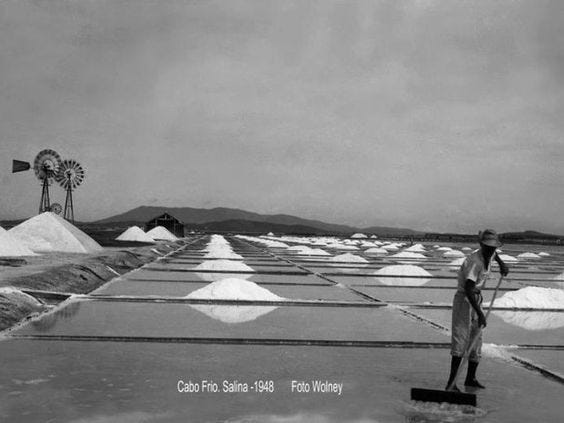What We Mean When We Talk About “Reworking” A Song
A genius Milton Nascimento song reimagined by piano genius Ran Blake
Milton Nascimento wrote “Cancao do Sal/Salt Song” on a typewriter at a desk job, recalling the sight of workers toiling in unforgiving sun at the Cabo Frio salt flat near Rio. The workers were in the news at the time; a strike brought national attention to the low pay and grueling conditions faced by the men, women and children (!) employed there.
The song was recorded in 1966 by Elis Regina, and became a hit. Nascimento appeared with Regina, then at a torrid early peak as a vocalist, on Brazilian television just as “Cancao do Sal” was gathering steam on the radio; in short order his career as both songwriter and singer was launched.
It’s a slight, straightforward, deceptively brilliant song – two verses in major followed by a bridge in minor that’s often interpreted in double time, as a samba. Its melody is unlike that of any other work song: There’s an ascending line that’s a rush of lyricism, the heart-stirring surge of a curtain opening. And then, as often happens in Nascimento’s compositions, the theme turns down more melancholy avenues. The verses share a worker’s thoughts about his family (“Working the salt the sweat that pours from me is love”), the verses teach a bit about the process (“Water becomes salt there in the saltern”). After two trips through the form, there’s an unprepared modulation, up a whole step, that sublimely enhances the poignance of the theme.
Here’s one of the more lavish Nascimento renderings of it, from his 1969 LP for CTI Courage, which features pianist Herbie Hancock and arrangements by Eumir Deodato.
And below is one of the more astonishing/brain-scrambling renditions of it, an improvised masterpiece of solo piano by Ran Blake that’s included on his 2009 album Driftwoods.
This right here is what we mean when we talk about the thoroughgoing reinvention of a song. It’s a multifaceted feat, extending the initial inspiration of the written outline into tangents and outlying districts the composer could not have envisioned.
Blake is a legendary pianist, composer and longtime educator (New England Conservatory) who’s been awarded both a Guggenheim fellowship and a MacArthur Genius grant; his list of famous students includes Don Byron, Matthew Shipp and John Medeski. His discography stretches from pensive solo collections (like Driftwoods) to fierce free improvisation discourses in duos and trios to large ensemble works.
It’s tempting to try to unpack Blake’s approach note by note, to go full geek-mode on his cannily encrypted ideas and devices. On his “Cancao do Sal,” you might notice the way Blake first treats the theme – like a precious object – and then gently but methodically fractures it, digressing into fleeting side contemplations and sullen corners that make geometry of the theme’s shape while keeping its emotional core. You almost can’t help observing that the pianist is thinking about the tune in several keys at once: As one luminous lingering chord begins to fade, another, belonging to a faraway key center, is struck, creating resonance via juxtaposition.
Blake’s version lasts just three minutes and 37 seconds. Throughout, he scampers around at light speed, testing ideas and then pausing, then returning to explore different fleeting impulses. But he never plays in a way that forces gratuitously meta wonkery onto an earnest little pop song. His ruminations spring from within the score. He goes far (far!) away from what’s written yet never for a second stops playing the song.




Never enough Nascimento, no matter who covers him.